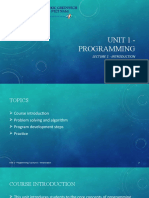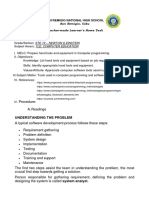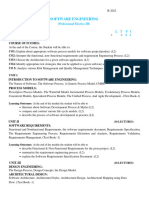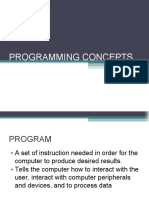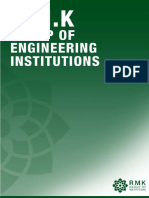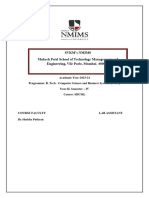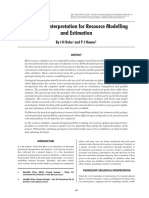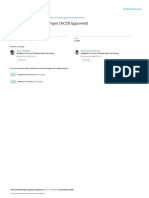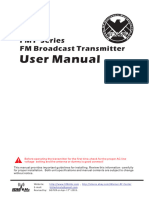0% found this document useful (0 votes)
11 views18 pagesWeek 3
The document outlines the program design curriculum for ITE1123, focusing on key concepts such as problem analysis, requirements gathering, and strategies for problem-solving. It emphasizes the importance of functional and non-functional requirements, as well as techniques for requirement gathering like interviews and surveys. Additionally, it introduces flowcharts and pseudocode as essential tools for visualizing and structuring program logic before coding.
Uploaded by
unity.nuwanCopyright
© © All Rights Reserved
We take content rights seriously. If you suspect this is your content, claim it here.
Available Formats
Download as PDF, TXT or read online on Scribd
0% found this document useful (0 votes)
11 views18 pagesWeek 3
The document outlines the program design curriculum for ITE1123, focusing on key concepts such as problem analysis, requirements gathering, and strategies for problem-solving. It emphasizes the importance of functional and non-functional requirements, as well as techniques for requirement gathering like interviews and surveys. Additionally, it introduces flowcharts and pseudocode as essential tools for visualizing and structuring program logic before coding.
Uploaded by
unity.nuwanCopyright
© © All Rights Reserved
We take content rights seriously. If you suspect this is your content, claim it here.
Available Formats
Download as PDF, TXT or read online on Scribd
/ 18
